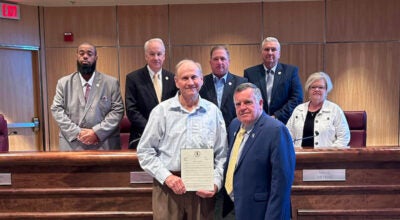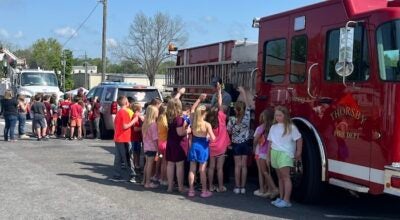Fire can be a valuable tool
Published 8:28 pm Thursday, November 13, 2008
Fire, a terror of the forester, is also on of their most useful tools. Prescribed burning is an economical and efficient method of achieving forest management objectives, according to local forest ranger, Glenn Barnett, of the Alabama Forestry Commission.
The use of fire in the Southern forests has a long history dating back to the period of the Indians and even before mankind by periodic lightning fires that ran unchecked until stopped by some barrier or rains, which extinguished the fire. The result was a mosaic of various forest types and size classes intermixed with savannahs and grasslands instead of a solid jungle-like forest.
The practice of using fire was adopted by early settlers and has become an important practice in managing the various forest resources in the Southern pine woods. Properly used, prescribed burning is an effective tool in the management of our forests because of its low cost and compatibility with other land-use objectives.
Barnett said that one of the most important reasons to use prescribed burning is to reduce potentially hazardous fuels thus decreasing the risk of wildfire damage. Wildfires in Alabama burn on average 83,000 acres per year.
Prescribed burning can also be used to prepare sites for seeding and planting. Burning exposes the mineral soil, controls competing vegetation and removes debris that may impede new growth.
Through burning, wildlife habitat can be improved by increasing the amount of good quality forage, legumes and browse Barnett said. It also creates openings for feeding and travel.
Other objectives that prescribed burning can help achieve are controlling disease, improving the quality and quantity of grasses and flowering plants, enhancing appearance for recreational purposes and improving efficiency in harvesting timber.
As a result of the experience of early forestland managers and research it has been determined that fire does have a place in managing the Southern pine forests. In fact, Southern pine forests are fire climax forests. Without fire, these forests would, in time, be replaced with low-quality hardwood species as the pines died or were harvested. While prescribed burning is desirable in pine stands, foresters do not recommend using fire in hardwood stands.
Time and weather conditions must be closely monitored, though, to avoid the danger of wildfire. Prescribed burning should always be done under the correct conditions.
Timing is especially important when fire is used. If hardwood control is the objective, sites should be burned from winter to summer. Use cooler backfire burns during the summer or where residual timber is present. More than one burn may be required to control hardwoods. Fall and winter burns are best for spring sowing, reduce fuel buildup and to improve wildlife forage. Do not burn during nesting periods (April-June for turkey and quail). It is best to leave some unburned areas when managing for turkey, quail and dove. Summer and fall burns are used on areas targeted for natural regeneration or tree planting.
The most important weather considerations when planning a burn are wind direction and speed, relative humidity, temperature, rainfall and sir-mass stability. Generally, winds should be no more than 2-10 miles per hour for most terrain in this area. Relative humidity should be from 30-60 percent and preferred air temperature for winter burns is from 20-50 degrees.
For summer burning in cutover areas, air temperatures will be higher, so the soil should be moist to reduce the fire temperature. One-half to one inch of rainfall is desired from one to three days prior to the burn. The sir must be relatively still to insure a more consistent burn. A hotter fire is usually used in cutover areas, while a cooler backfire is used in understory stands with existing and desirable timber. Obviously, the hotter the fire, the more trees killed. Hardwoods are much more susceptible to fire than pines.
Weather forecasts are easy to obtain from the National Weather Service on NOAA Weather Radio or by calling your local Forestry Commission Office. Perfect burning weather usually occurs only four or five days during the winter, so you may have to accept less-than-perfect conditions.
The most important point to remember is, get professional help. This is not a do-it-yourself project and requires qualified crews with adequate equipment and a burn permit from AFC. Wildfires jumping fire break control lines or smoke settling on highways can put you at risk.
The Forestry Commission can examine your property and prepare a burn plan. The plan will locate the area by aerial photograph, state the objectives of the burn and detail the time and weather conditions for the burn.
The landowner can also coordinate with the local AFC office for possible assistance during the actual burning. An evaluation of the site will be made after the burn to see if the objectives were met.
Also, before you burn you must have a permit, which is required by law. Call the AFC office at 1-800-242-2504 for a permit, which is free. For more information on prescribed burning, call the local AFC office at 55-3042.






